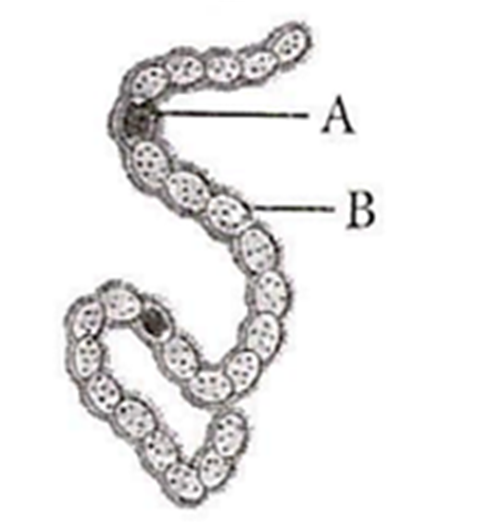 Multiple Choice Questions
Multiple Choice QuestionsYeast is not included in protozoans but in fungi because
it has chlorophyll
it shows saprotrophic mode of nutrition
it has eukaryotic organisation
cell wall is made up of cellulose and reserve food material as starch
As secondary growth proceeds, in a dicot stem, the thickness of
sapwood increases
heartwood increases
both sapwood and heartwood increases
both sapwood and heartwood remains the same
Photosynthesis in C4 plants is relatively less limited by atmospheric CO2 levels because
there is effective pumping of CO2 into bundle sheath cells
RuBisCO in C4 plants has higher affinity for CO2
six carbon acids are the primary initial CO2 fixation products
the primary fixation of CO2 is mediated via PEP carboxylase.
The chemiosmotic coupling hypothesis of oxidative phosphorylation proposes that adenosine triphosphate (ATP) is formed because
a proton gradient forms across the inner mitochondrial membrane
there is a change in the permeability of the inner mitochondrial membrane towards adenosine diphosphate (ADP).
high energy bonds are formed in mitochondrial proteins
ADP is pumped out of the matrix into the intermembrane space
A.
a proton gradient forms across the inner mitochondrial membrane
The chemiosmotic hypothesis was given by Mitchell. It explains the process of ATP formation and states that it is linked to development of proton gradient across the mitochondrial membrane. ATP synthase is required for ATP synthesis is located in F1 particles. It becomes active only when there is high concentration of proton on F0 side as compared to F1 side.
A plasmolysed cell can be deplasmolysed by placing it in
isotonic solution
saturated solution
pure water or hypotonic solution
hypertonic solution
Which one of the following is correct for the transmembrane proteins in lipid bilayer of plasma membrane?
They are absent in animal cells
They act as channel proteins
They are absent in plant cells
They are only externally located
Which of the following is a group of micronutrients for plants?
Fe, Mn, Cu, Mo, Zn
Fe, Mn, Cu, O, C
Cu, B, Cl, Fe, Ca
Ca, Mg, Fe
Identify the labelled part in the given figure and select the correct option.

A - Heterocyst, B - Mucilaginous sheath
A - Mucilaginous sheath, B - Heterocyst
A - Heterocyst, B - Capsid
A - Pseudopodia, B - Mucilaginous sheath
Assertion : Gap junctions perform cementing function to keep the neighbouring cells together.
Reason : Tight junctions facilitate the cells to communicate with each other by connecting the cytoplasm of adjoining cells, for rapid transfer of ions, small and big molecules, etc.
If both assertion and reason are true and reason is the correct explanation of assertion.
If both assertion and reason are true but reason is not the correct explanation of assertion.
If assertion is true but reason is false
If both assertion and reason are false
Assertion : Consciousness is considered as the defining property of living organisms.
Reason : All organisms, from the prokaryotes to the most complex eukaryotes can sense and respond to environmental stimuli.
If both assertion and reason are true and reason is the correct explanation of assertion.
If both assertion and reason are true but reason is not correct explanation of assertion
If assertion is true but reason is false
If both assertion and reason are false
